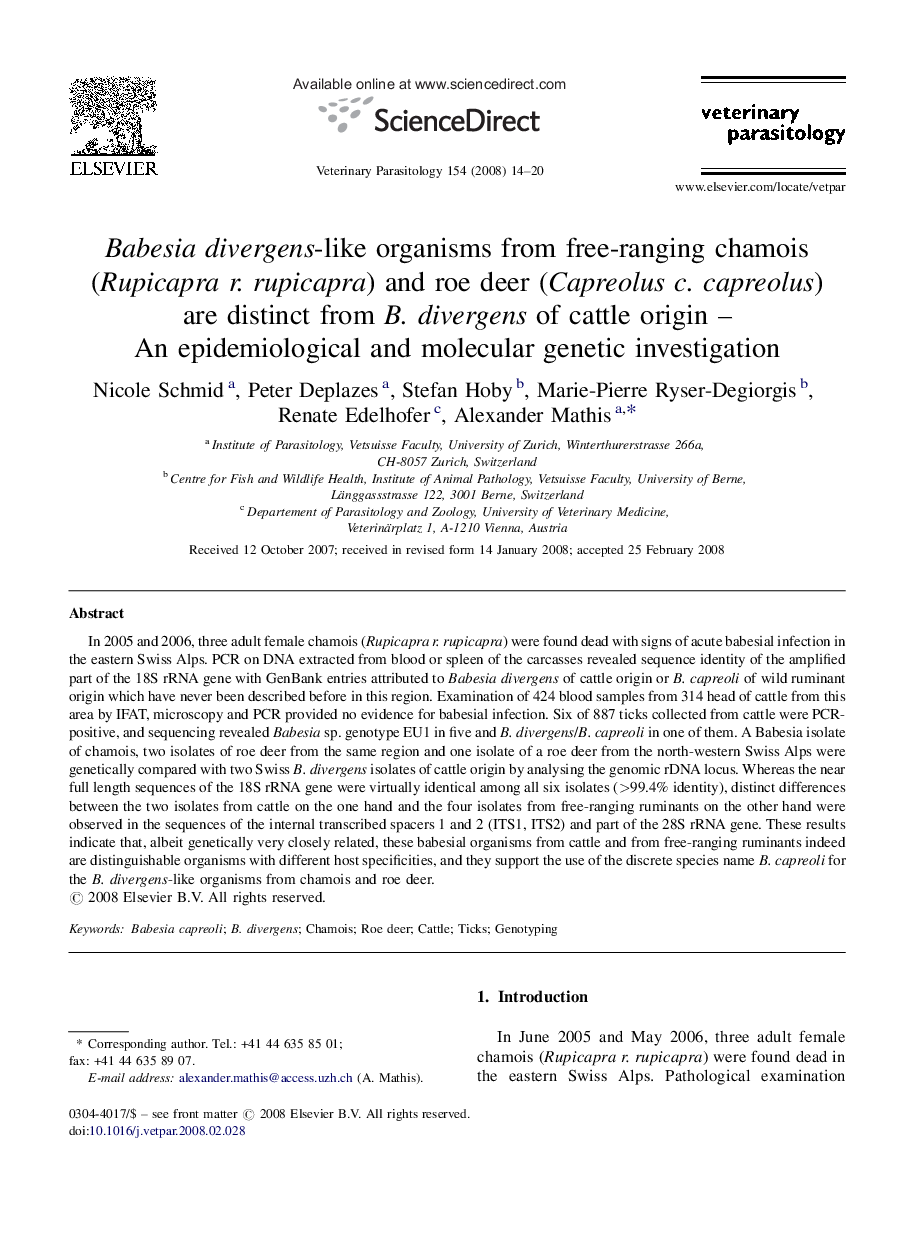| کد مقاله | کد نشریه | سال انتشار | مقاله انگلیسی | نسخه تمام متن |
|---|---|---|---|---|
| 2471475 | 1555768 | 2008 | 7 صفحه PDF | دانلود رایگان |

In 2005 and 2006, three adult female chamois (Rupicapra r. rupicapra) were found dead with signs of acute babesial infection in the eastern Swiss Alps. PCR on DNA extracted from blood or spleen of the carcasses revealed sequence identity of the amplified part of the 18S rRNA gene with GenBank entries attributed to Babesia divergens of cattle origin or B. capreoli of wild ruminant origin which have never been described before in this region. Examination of 424 blood samples from 314 head of cattle from this area by IFAT, microscopy and PCR provided no evidence for babesial infection. Six of 887 ticks collected from cattle were PCR-positive, and sequencing revealed Babesia sp. genotype EU1 in five and B. divergens/B. capreoli in one of them. A Babesia isolate of chamois, two isolates of roe deer from the same region and one isolate of a roe deer from the north-western Swiss Alps were genetically compared with two Swiss B. divergens isolates of cattle origin by analysing the genomic rDNA locus. Whereas the near full length sequences of the 18S rRNA gene were virtually identical among all six isolates (>99.4% identity), distinct differences between the two isolates from cattle on the one hand and the four isolates from free-ranging ruminants on the other hand were observed in the sequences of the internal transcribed spacers 1 and 2 (ITS1, ITS2) and part of the 28S rRNA gene. These results indicate that, albeit genetically very closely related, these babesial organisms from cattle and from free-ranging ruminants indeed are distinguishable organisms with different host specificities, and they support the use of the discrete species name B. capreoli for the B. divergens-like organisms from chamois and roe deer.
Journal: Veterinary Parasitology - Volume 154, Issues 1–2, 14 June 2008, Pages 14–20